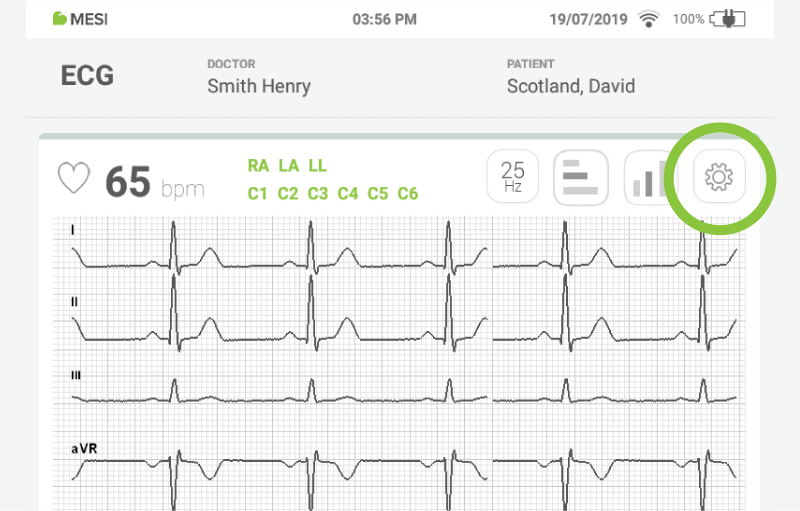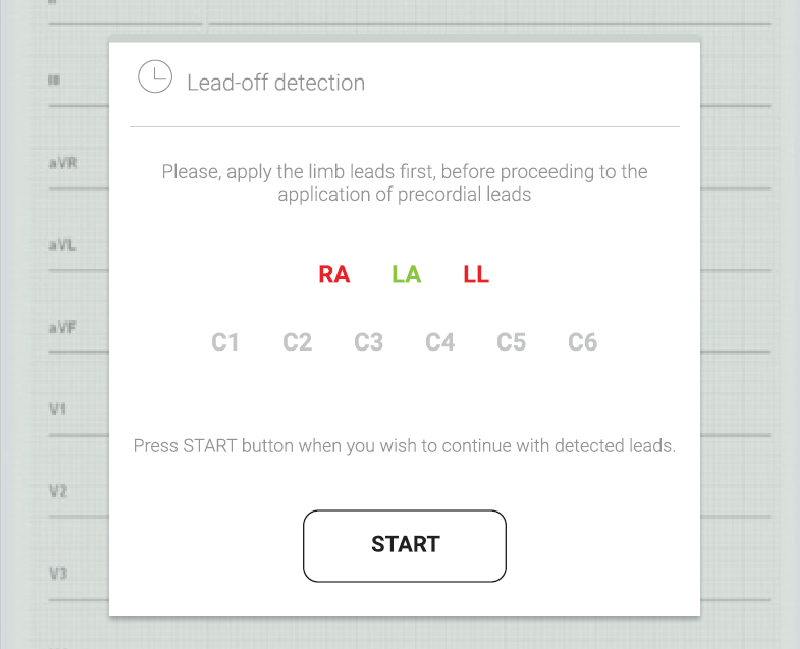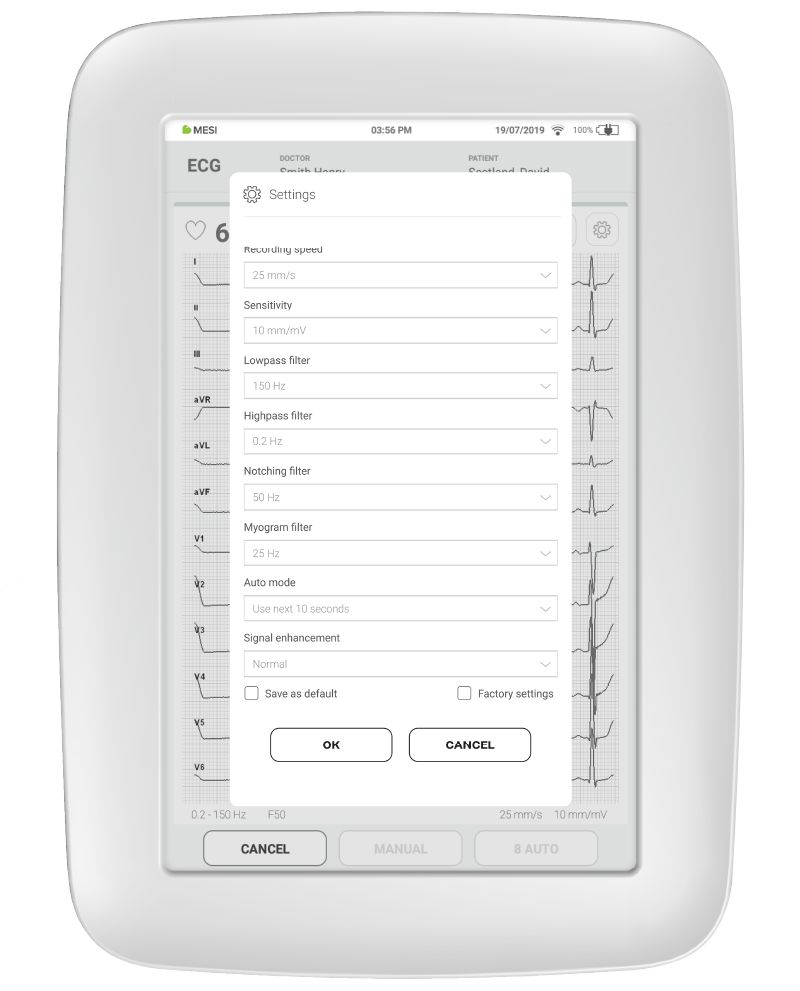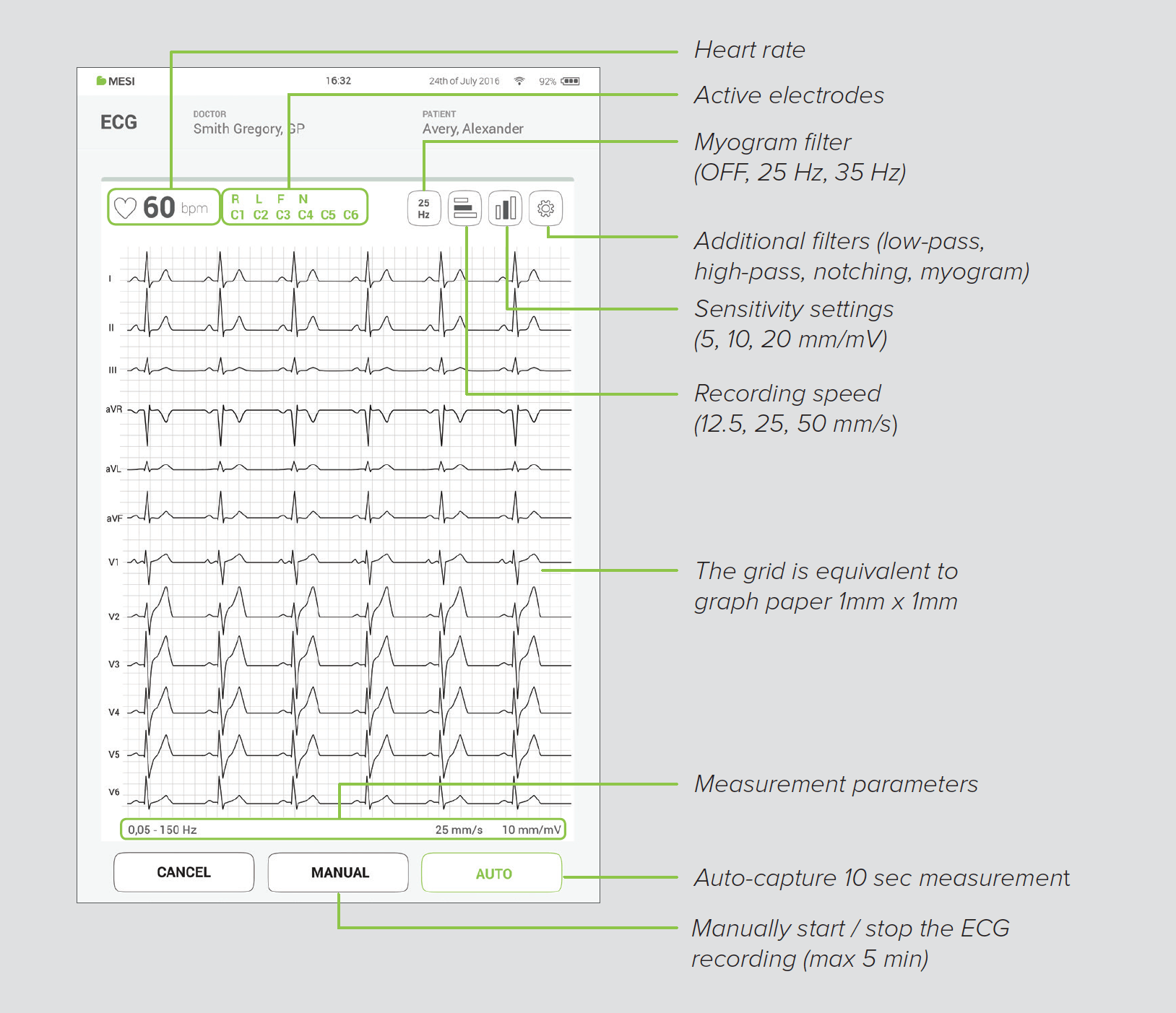Get to know your MESI mTABLET ECG filter settings

ECG settings make an important contribution to accurate cardiac diagnostics. Explore the role of different ECG filter types, get to know the MESI Signal Enhancement setting and learn how to operate the MESI mTABLET ECG settings screen.
In this blog you will learn:
1. Why filters are used
2. Filter types:
Low-pass filter
High-pass filter (baseline filter)
Myogram filter (muscle filter)
Notching filter (mains filter)
3. MESI Signal enhancement
4. How the filters are usually set
5. How to set the filters on the MESI mTABLET ECG
6. Troubleshooting
7. Practical overview of the MESI mTABLET ECG screen
Why filters are used
In the ECG, the signal levels are very low (< 5 mV), so filtering is used to remove a wide range of noise. The noise may come from an unstable DC offset from the electrode/body interface, muscle noise, mains hum (50/60 Hz), nearby equipment and from within the ECG equipment itself, such as from internal DC/DC converters.
Filters remove or reduce the frequencies where the noise occurs while allowing the signal frequency through. Filter activation influences both the displayed and printed signals. For correct and accurate analysis, any automatic interpretation of the trace is always performed on the non-filtered signal only.

Filter types
Low-pass filter
This filter is used to reduce various high-frequency muscle artifact and external interference – noise generated by nearby electronic devices. The 150 Hz setting clears most of the signal. If you require less filtering, the setting should be set to 250 Hz.

High-pass filter (baseline filter)
Used to remove low-frequency components such as motion artifact, respiratory variation, and baseline wander.
Three settings (0.5 Hz, 0.2 Hz, 0.05 Hz) could be linked to the following use cases:
0.5 Hz: Strongest filtering. Usually used for extended observations, i.e. for the rhythm. It can also be used when the baseline drift (i.e. a strong noise with slow and unusually large signal offset) occurs with the 0.2 Hz filter.
0.2 Hz: General practice use.
0.05 Hz: Weakest filtering. Used in cardiology, where every detail matters. (As the weakest filter, it is the most susceptible to baseline drift.)
Myogram filter (muscle filter)
Used for reducing muscle tremor signal, seen when the electrodes are placed on large muscle masses. Similarly to the Low-pass filter, the setting should be set higher if the noise comes through.
Please note: A recorded ECG is stored without the myogram filter. It is therefore possible to print the stored ECG either with or without the myogram filter. All the other filters can not be removed from the ECG recording once they are activated.
Notching filter (mains filter)
Used for filtering mains interference without distorting the ECG signal. It should always be enabled and set to local mains frequency, e.g. 50 Hz for Europe.
MESI Signal enhancement
Since the ECG trace can drift a bit before it stabilises (i.e. the baseline drift occurs), selecting the Progressive mode with either 0.2 or 0.5 High-pass filter ensures faster and greater stability from the beginning of the measurement and provides a good quality signal with all types of electrodes, including self-adhesive electrodes (where conductivity can sometimes be impaired, e.g. by inadequate patient preparation).

When the Progressive mode is enabled, however, the lead-off detection window will be shown prior to the measurement, letting you know which leads are connected and which not. When all leads are successfully attached, the measurement will continue automatically.
On the MESI mTABLET ECG screen, the lead-off detections are marked in red.

How filters are usually set
Here is an example of the filter settings that should be enabled for a clear and stable signal capture:
Low-pass: 150 Hz
High-pass: 0.2 Hz or 0.5 Hz if baseline drift occurs
Notching: 50 Hz (e.g. for the EU)
Myogram: 25 Hz
Signal enhancement: Progressive

How to set the filters on the MESI mTABLET ECG
During the ECG measurement with the MESI mTABLET ECG, the recording screen is comprised of the 12-lead signal displayed in real time and recording settings. At the same time, it displays the electrode connection status which will notify you if the applied electrode has good or a bad signal strength. If the patient has a pacemaker, the PACE indicator will light up next to electrode status.
Fast buttons are there to change between most common filters, recording speed and sensitivity. By pressing on the button repeatedly, you can switch between the following options:
Myogram filter button rotates between 25 Hz, 35 Hz and “off” options
Sensitivity button changes the amplitude settings between 5, 10, 20 mm/mV
Recording speed button rotates between 12, 25, 50 mm/s values
The device comes with default settings which we deem to be best for general use; these settings can be adapted at any time or restored by selecting “default settings” in the ECG settings screen.
Troubleshooting
If you are experiencing problems that you think are connected with ECG settings or signal, please make sure that:
the electrodes aren’t placed directly on the large muscle masses,
the skin was abraded prior to replacing the electrode,
you check all electrode, lead wire and ECG cable connections,
you check if the electrode gel has dried out,
you replace ECG cable and/or lead wires.
Practical overview of the recording screen on the MESI mTABLET ECG


Here is a user-friendly ECG e-book full of illustrations!
Get your free copy here